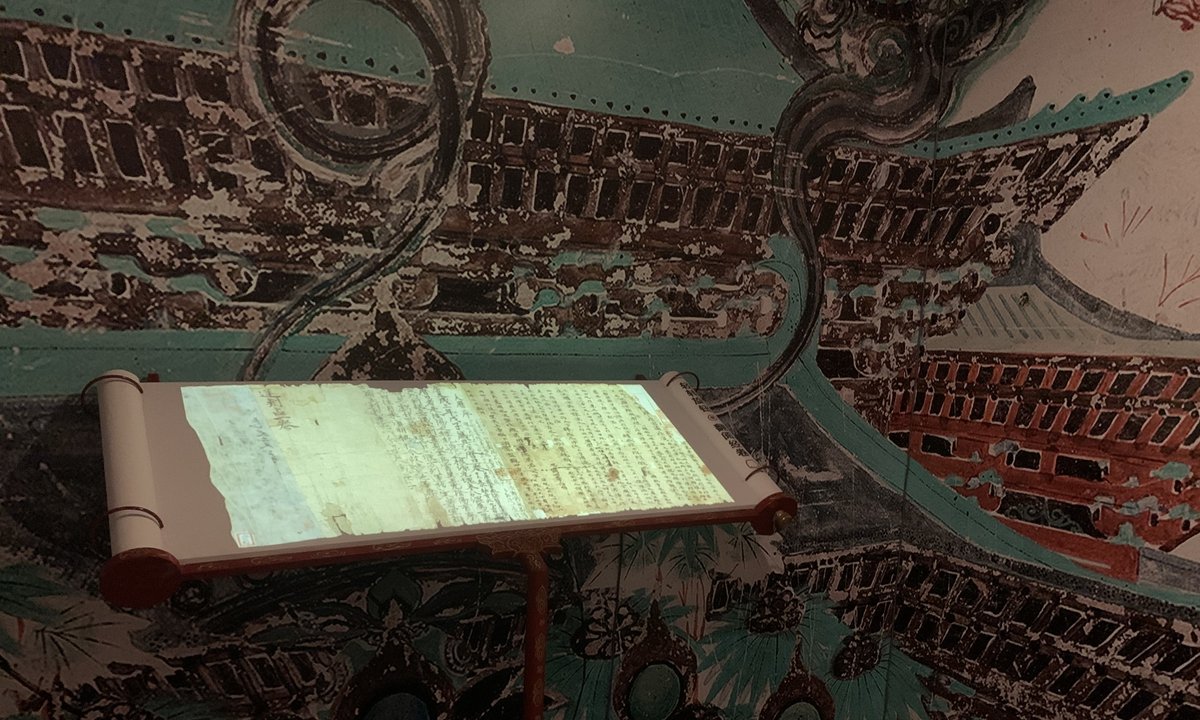In a remarkable cultural event, the world-famous Dunhuang relics, once scattered across the globe, have been brought together in a spectacular display for enthusiasts and visitors in the Ningxia Hui Autonomous Region of Northwest China. This unique exhibition, which runs from Saturday to January 20, 2024, features 80 replicas of the original Dunhuang artifacts, now housed in various museums around the world, including the prestigious British Museum.
These replicas have been meticulously restored using non-destructive 3D scanning technology. This innovative approach has been increasingly adopted by numerous institutions in recent years to enable the sharing of immovable cultural relics through national and international tours. The replicas at the Guyuan Museum in Ningxia include a wide array of cultural items, such as silk paintings, paper and linen paintings, and scriptures from significant Chinese historical periods including the Northern and Southern Dynasties (386-589), Sui (581-618), Tang (618-907), and Northern Song Dynasty (960-1127). The reproductions are exact in scale (1-1) and replicate the original colors precisely, according to the museum’s personnel.
The discovery of the Dunhuang Library Cave in 1900 marked a pivotal moment in the history of Dunhuang art and culture. However, the dispersion of many treasures from this cave has made it challenging to reunite them in their place of origin. According to reports by Xinhua News Agency, over 40,000 cultural relics from Dunhuang are dispersed in more than ten countries, including the UK and France. Over the past century, generations of Dunhuang scholars have dedicated themselves to compiling and collecting materials related to Dunhuang that are scattered overseas.
Feng Bin, a cultural relic restorer based in Chongqing, emphasized the critical role of digitalization in repatriating these dispersed materials, particularly those from Dunhuang. The British Library’s initiation of the International Dunhuang Project (IDP) in 1994 marked the beginning of the digital sharing of Dunhuang cultural relics. In a significant gesture of cultural collaboration, the National Library of France provided high-definition digital copies of Dunhuang documents to institutions like the Dunhuang Academy in 2015.
The current exhibition in Ningxia, featuring these digitally restored replicas, offers both high research value and aesthetic appreciation. The museum staff describe these materials as “keys that open the history of that time,” allowing visitors to experience the rich art and culture of Dunhuang across different eras and styles.
Jointly hosted by the Guyuan Museum in Ningxia and the Jiuquan Museum in Northwest China’s Gansu Province, the exhibition represents a remarkable effort in cultural preservation and education. The Mogao Caves in Dunhuang, containing 735 caves filled with Buddhist art, draw over a million visitors annually. Scholars and researchers have long been dedicated to using new technologies, such as 3D scanning and digital photography, to aid their studies.
The Dunhuang Academy, a national research institute dedicated to the study of the Mogao Caves, has achieved significant milestones in digital preservation. As of 2022, the academy has completed digital photographing of 278 caves, image processing of 164 caves, 3D reconstruction of 145 painted sculptures, and the study of seven ruins. Additionally, they have developed a panorama-tour software program encompassing 162 caverns and over 50,000 digitized film negatives, including cultural artifacts from the caves.
Similar digitization efforts have been undertaken at other significant sites like the Yungang Grottoes, underscoring the importance of protecting and publicizing these archaeological finds. The Yungang Grottoes Research Academy has digitized on-site relics and used 3D printing technology to replicate three of the grottoes so far.
Ning Bo, head of the 3D printing technology team at the Yungang Grottoes, described the intricate process of replicating these ancient marvels. He likened the entire compound to a massive Lego model, each block more than two square meters in size, assembled using eight containers. This innovative approach to cultural preservation and display not only safeguards the physical integrity of these ancient sites but also makes them more accessible to the public, both in China and around the world.
READ MORE:
